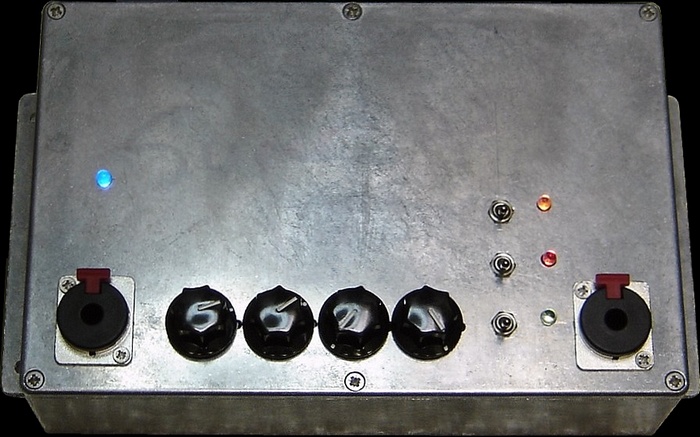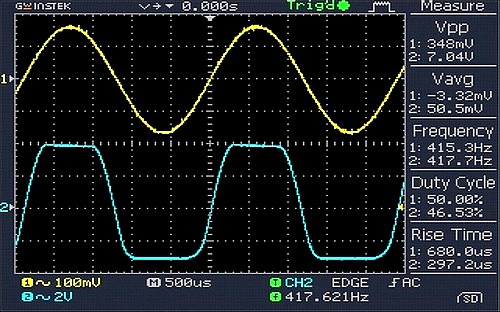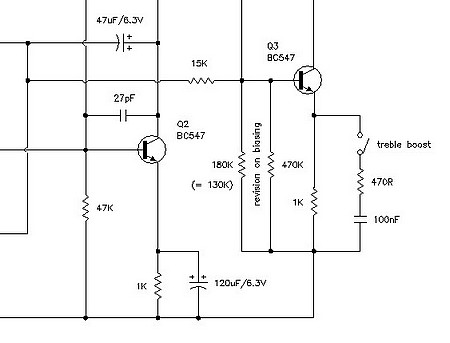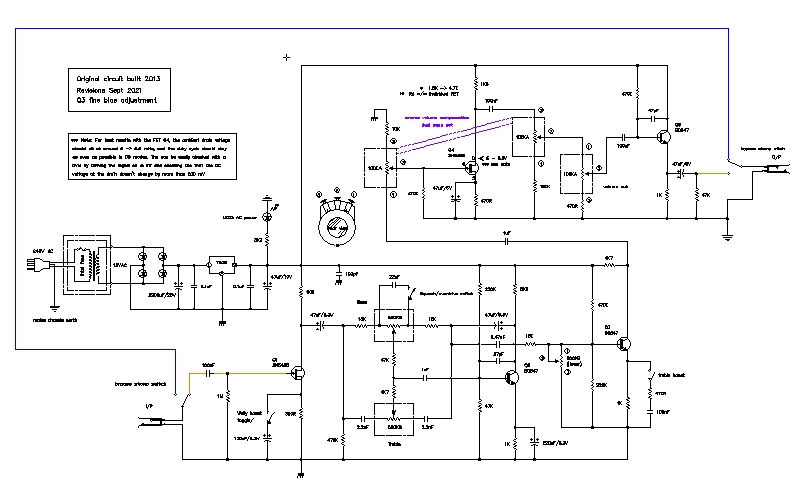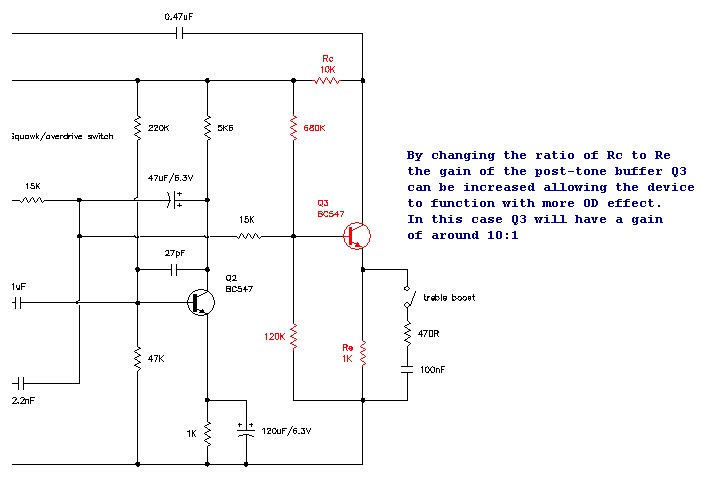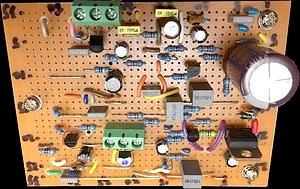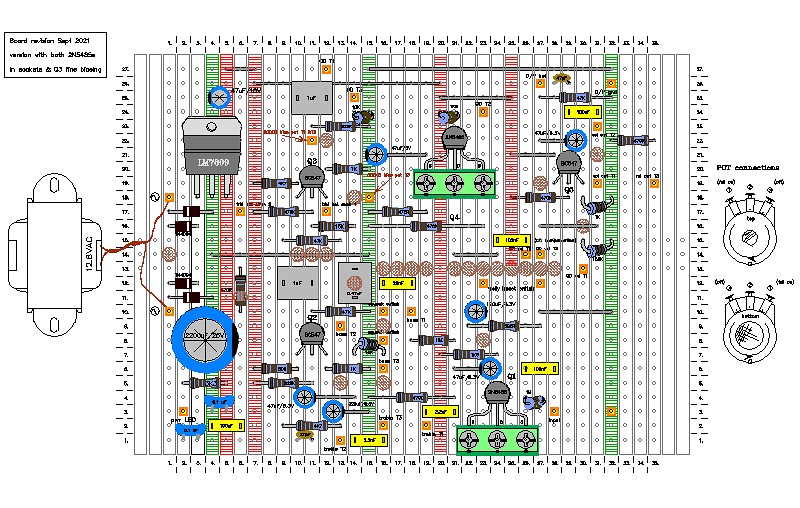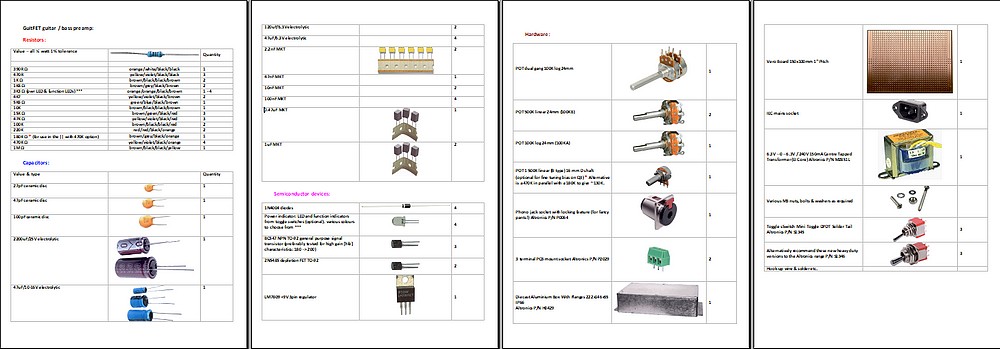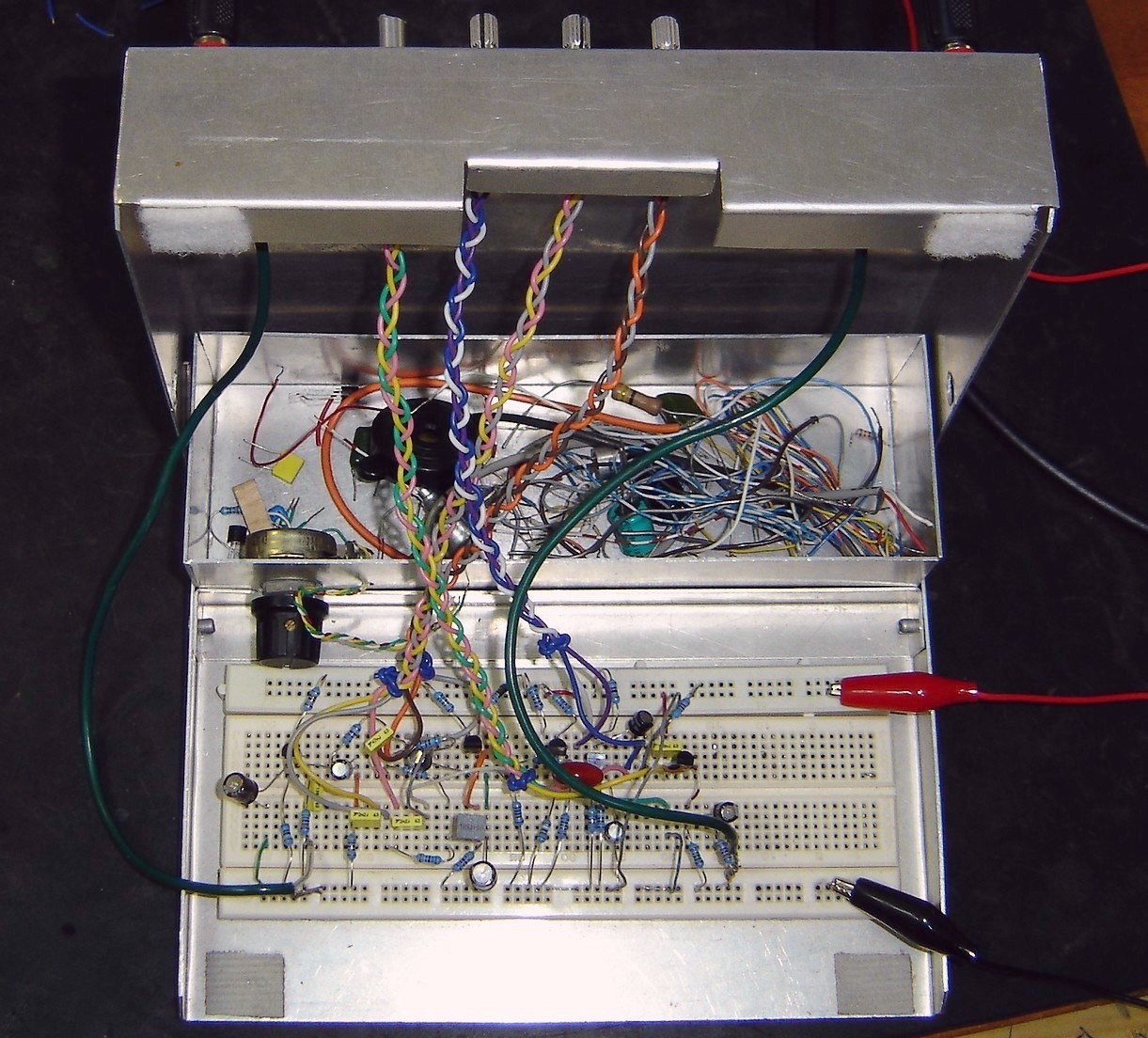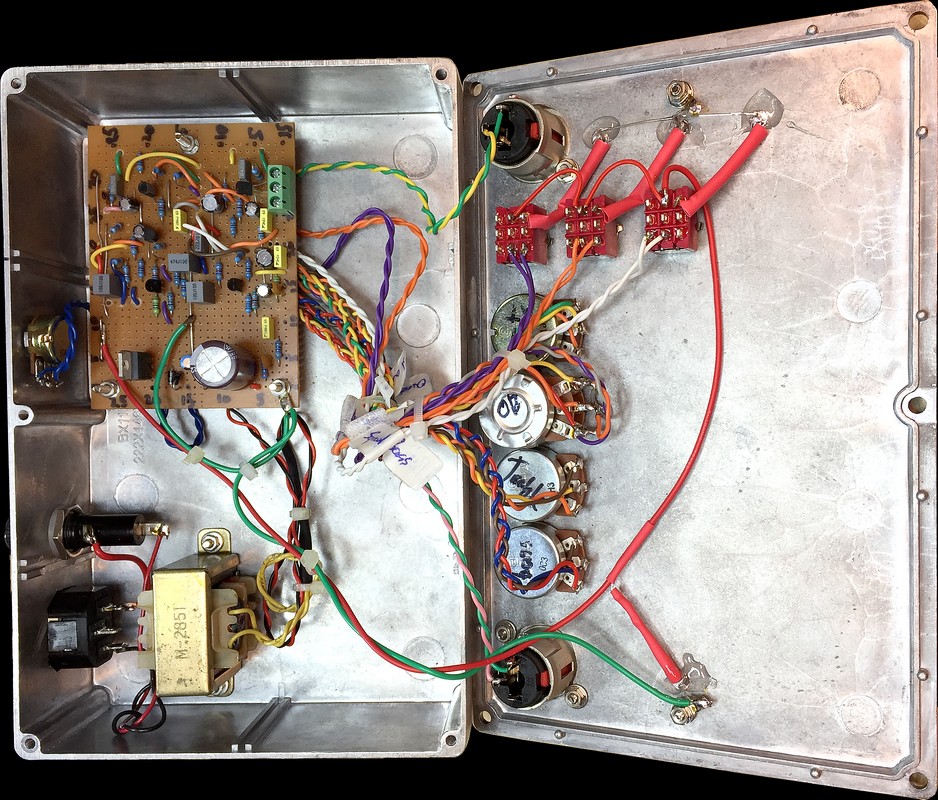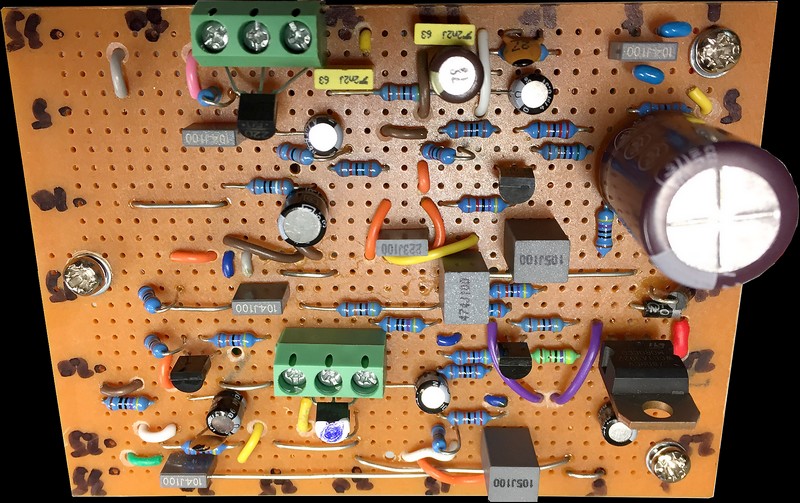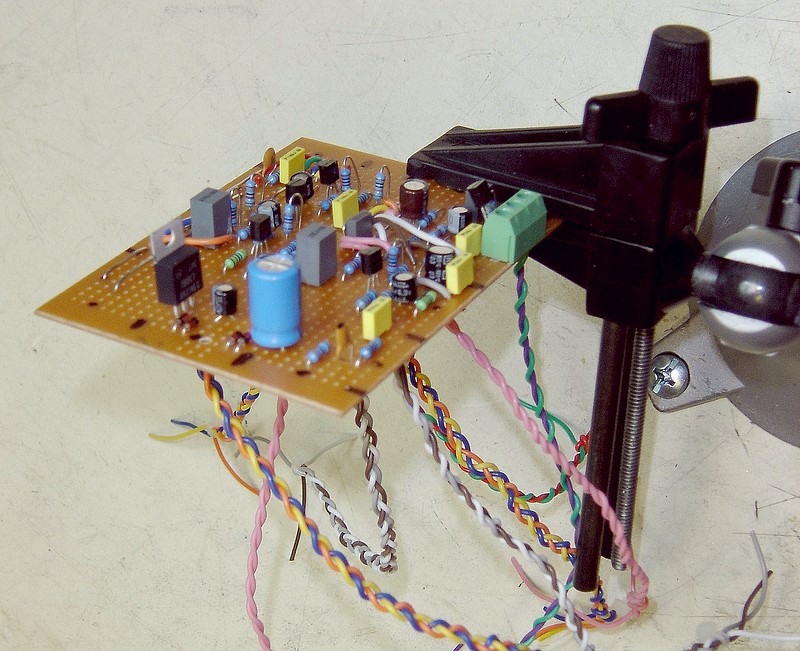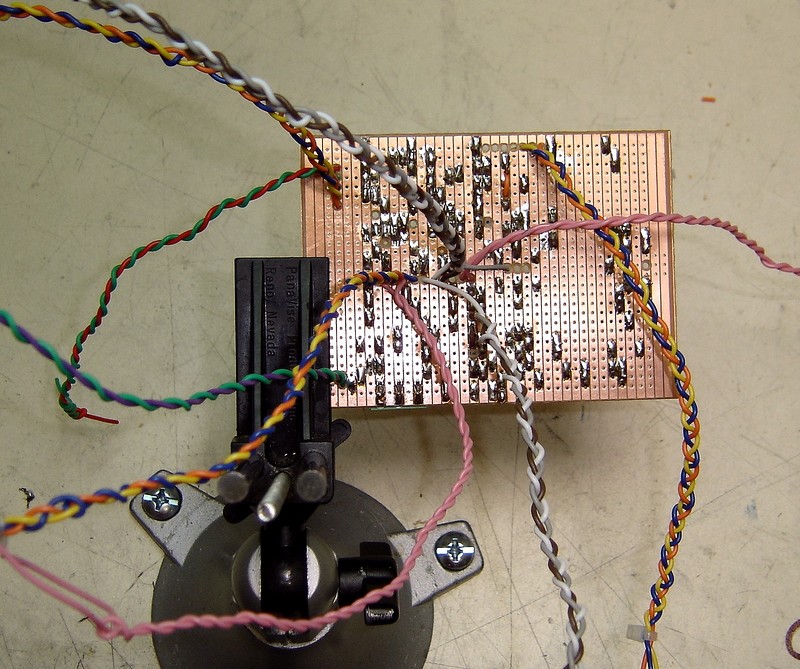Guitars of Love

...guitar / bass preamp puts some Lush in the Mush
| kelvin@guitars-of-love.com |
|
This my 5th 'GuitFET' preamp design and is designed more with the bass in mind. It is elegant and functional ... I have a winner! It makes an excellent DI for recording and gives a bass a full amp sound going straight in to a line input. I've heard a few people say that it makes an electric bass sound like a double bass. It gives a bass a subtle tone control, imbued with an envelope of valve (tube) like warmth and punch, and at the same time clarity. It's also very good for guitar as well, giving that warm mild breakup that a valve (tube) amp produces when in partial overdrive. If you want the full blown guitar version as well here's the one you want. It's a discrete component, class 'A' preamp using a depletion FET transistor at the input, and again a depletion FET drive section after the tone controls to add a real valve sound. It overdrives to a point, but is for tone, not for shred: It is designed with standard output passive PUs in mind such as a typical standard Strat , Telecaster or 'P' bass and Jazz bass etc. When DI-ing with a bass, it sounds like a luscious valve bass amp if it was miked up. You can hear an instrumental track with the electric guitars & the bass recorded using this device here:
|
There are a million OD pedals out there. I built my first version of this one many years ago as a simplified version of my rather remarkable original 'GuitFET'. I thought a simple one would be nice. I hardly used it though, but recently I started using it for the bass, and noticed how much it warmed up and articulated the sound when running into my Fender BXR bass amp. It gives the notes punch and warmth and a much more recordable sound than just plugging straight in to a regular bass amp. It is also equally at home as a guitar tone pre with a clear warm sound from clean to partial OD perfect for R&B, Pop and Country guitar. Click here for detailed shots of the completed unit: |
|
Click on the oscilloscope image to the right to get a full technical testing of the circuit. This guitar/bass preamp has great tone function and some FET overdrive function for guitar and bass. It is crystal clear and warm in sound, and has large tone variation from shimmering highs to thundering lows. As well as having the usual volume out level control, it features a volume compensating function, whereas the OD increases, it is compensated by a reduction in O/P volume via a dual gang pot. Unfortunately, despite the label - it is not really simple to build. It uses a FET input which does the job of a 12AX7 valve, and another FET after the tone controls to add valve like OD. The bass knob also doubles up as an extra OD function. There is also a treble boost switch to give that Fender amp like twang. |
Note: Since doing these tests on my breadboard prototype I have limited the frequency response to be within 3dB from about 35Hz to 50KHz. This is pretty much the spec on a typical good sounding Hi Fi amp such as a NAD or Rega, and is more than adequate for it's purpose. Going up into RF frequencies is not desirable! |
|
At right is the GuitFET schematic. Just click on the pic for the full res pdf version. Please note that although I have included a true bypass foot switch in the schematic, I have not yet wired one in to my prototype, as I am using it primarily as a bass preamp. With the OD set to minimum and the 'welly' switch off, it's pretty damn clean. It's not the sort of effect you would be punching in and out really. The 'Squawk" switch is a great effect to emulate a funky warm, slightly distorted sound particularly on the bass. It makes an otherwise boring sounding transistor bass amp sound like an all tube Fender Bassman being driven hard. A recent mod has included a fine adjustment pot to the biasing of Q3, which enables perfect linear clipping top & bottom. If this seems too much hassle, the alternative is a 470K in || with a 180K to effect a 130K as per the sketch below.
|
If desired the gain of the circuit can be increased to give more overdrive for guitar use by changing the values of the collector resistor and the emitter resistor on Q3 . Accordingly the values of the voltage setting resistors to the base of Q3 must be adjustekeep the stage DC balanced. This will result in a slightly harsher sound however, due to the increased odd harmonics generated by Q3. |
|
At right is a very detailed graphic which shows you exactly where to put the parts on a standard size vero board, and break the copper strips in the appropriate places. This latest version utilizes two sockets to accomodate the FETs. In the same way that vacuum tubes can be easily replaced, so can the FETs if needs arise Click on the image to go to the detailed pdf. It is an exact visual snapshot of a standard size 100mm x 75mm vero board available from many electronics stores such as Altronics. You can make it easier by marking out the rows and columns with a Sharpie. The copper breaks are scalloped out with a 5/32 drill bit with a rubber band wrapped around as a handle.
Click on the image to go to the detailed pdf. |
I have included two 3 terminal sockets to connect the input FET & the drive FET rather than soldering (just like a valve). Originally this was to facilitate easy replacement of the input FET in case it gets damaged by stray static voltages or faulty house earthing, typically found in pubs. Having sockets for the FETs - particularly Q4, which does the lion's share of sound shaping, enables them to be changed to optimise the OD function. Having tested many, I've found that only one or two in ten have the best wave shape in OD mode. The important thing is that the FET maintains and even duty cycle (mark to space ratio) top and bottom. This indicates the presence of even harmonics. The more unequal this is, the more odd harmonics will be produced. The input impedance is standard at one meg ohm. |
|
You can download a pdf with the parts list with pictures. Just click on the image at right: |
|
|
At right is the GuitFET preamp circuit set up on my little "breadboard" lab box. This is handy because it allows me to try it out under real conditions with a guitar and amp. They (breadboards) are very frustrating things at times particularly if they are getting worn as this one is, and the parts tend to make intermittent contact in the little sockets below. |
|
|
Inside the completed unit. I have left plenty of space for access to experiment with tweaks. |
|
|
At right is the latest version of the completed vero board for the preamp. I have developed a detailed drawing technique to facilitate an easier way of building Vero boards. This latest version utilizes two sockets to accomodate the FETs. In the same way that vacuum tubes can be easily replaced, so can the FETs if needs arise. This is particularly handy for optimising the FET Q4 (the one with the blue biro mark on top), which does the business of wave shaping. I have this new one running and the bass sound is simply fantastic. It has the punch and articulation of the very best valve bass amp. It is also great for guitar. You can hear an example on this recent recording where the GuitFET was used on both the bass and the lead guitars. The guitars went into the box and then into the clean channel II of a little VOX AD5. The bass went straight into the line input from the GuitFET. |
|
|
|
|
|
Threading the hookup wires through holes in the vero board makes for much more reliable wiring and stops the wires fraying and breaking during assembly. Mostly I utilise the existing scallop holes, by just drilling them out with a 1/16" drill. |
|
